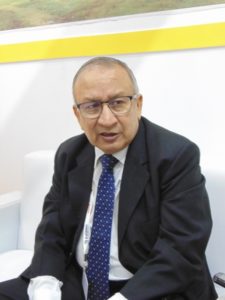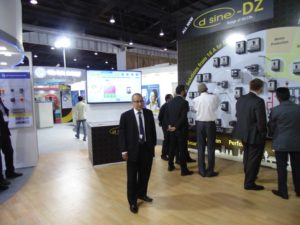Larsen & Toubro has been a regular exhibitor at Elecrama having participated in all editions of the mega event, starting from the very first in 1990. In Elecrama 2018, L&T had on display a wide range of innovative products, including some that were new launches. In this interaction with T&D India, S.C. Bhargava, Senior Vice President — Electrical & Automation, Larsen & Toubro, speaks on what Elecrama means to L&T and how the new “DZ” range of MCCBs launched at Elecrama 2018 compares with the best in the world.

What has Elecrama meant to L&T?
We have been taking part in Elecrama ever since it was launched. We have found it very useful to take part to showcase new products launched by us. Over the years, Elecrama has developed the stature of the biggest electrical exposition dedicated to power transmission and distribution. The number of foreign participants and foreign visitors that it gets has made it so significant that serves as a very useful platform to demonstrate our new products.
Tell us about the new launches at Elecrama 2018.
This year, we have several new things. The first is the “DZ” range of circuit breakers in the D-Sine family. It is the largest R&D project that we at L&T have undertaken. It took us almost eight years to develop the full range. It is as good as the best international range. It goes up to voltages as high as 800V and has breaking capacity of up to 200kA. With that we see that it would be able to take care of all the requirements of both residential and industrial markets for the next 7-8 years at least.
In addition to that we have a new range of domestic switches. We also have a new range of power quality solutions. With so much “chopping” of the current wave being done in the electrical system, harmonics is becoming a major issue. A lot of states have come out with laws as far as harmonics are concerned, and I guess, several more will follow. So a range of power quality solutions to actually take care of this issue of harmonics is something that everyone is seized of. We have extensions in this range of harmonic solutions that are also on display.
For the first time, we are also displaying a range of electronic solutions for the agricultural sector – some of them in the protection space and some in the control space. One solution is a controller that operates solar pumps. We have a system available that takes the photovoltaic inputs and drives a submersible pump.
We understand that work on the DZ range started 7-8 years ago. Despite that, you say that the range will stay “current” for the next 8-10 years. How did you foresee this at the time of development?
When we start, the first 8-10 months are spent only in gathering various inputs. For instance, we look at what is available. We also look at the patents which others in the world are working on. It gives us some idea of what is likely to come after 5-7 years. Let me tell you we get it 90 per cent right! The balance 10 per cent has to be tweaked during the development phase. And when we say patents, we mean global patents. Today, we know that everything that the customer has thought of is factored into this new product range. The new D-Sine range will seek to replace the existing D-Sine range, and thereby define a new paradigm.

What are the main sectors where DZ could find application?
The industrial market requires high-voltage and high breakers. We also have the residential market that needs high-performance breakers at the right cost. The MCCB is Rs.1,200 crore. Currently, we have almost a 30 per cent and we are looking at the new D-Sine range to improve our market share.
The energy meter business is picking up thanks to government procurement. What is your view?
We still have a lot of unmetered connections. Making sure that every electric connection is metered requires plain and simple electronic meters. At the other end of the spectrum, you have smart meters. Smart meters, apart from measuring electricity, also have the capability to communicate. The utility provider can also connect and disconnect supply to the consumer, remotely. The utility will also be able to detect malfunctioning or tampering of the meter. It will therefore reduce the possibility of electricity theft. Though smart meters are expensive, they will be in demand due to their multiple functionalities.
We hear of features like time-of-day tariffs available in smart meters. Has this been put in place in India?
All our meters, even over the past ten years, have time-of-day tariff capability. But today, what is happening is that the discoms are giving this ToD advantage only to HT consumers. To the LT (residential) consumers, there is only one tariff. If we (residential consumers) were to get ToD tariffs, we could choose to run heavy loads, for instance washing machines, during off-peak hours.
Do you think mass procurement by agencies like EESL is pushing down the prices of smart meters?
Of course, EESL procurement pushes down the costs. In November-December 2017, EESL procured smart meters at around 40 per cent lower than market prices. What will happen is as smart meters start coming in, you will see prices change. Today, smart meter prices in India are lower than anywhere else in the world. I guess going forward, they will only go down. In the metering business, prices only drop year on year.
What is your take on the energy meter business of L&T?
The requirement of energy meters in India is so high that it will continue to keep us busy. L&T makes about 8-9 million meters per year, and our current order book is 6-7 months, which is 3-4 million meters.


